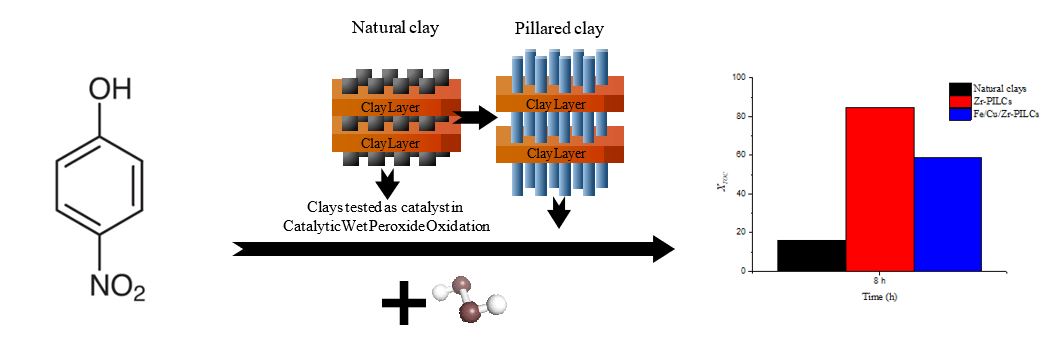
The constant development of technological processes aggravates the problem of pollution, due to a significant change in the composition of effluents, which makes necessary new (and/or improved) treatment methods and catalytic materials. In this sense, the use of natural clays in the synthesis of low-cost pillared clays for application as catalysts in oxidation technologies for the treatment of wastewaters is relevant from an environmental and sustainable point of view. In this work, inexpensive natural clays from different regions of Kazakhstan (Akzhar, Karatau, and Kokshetau) were used in the preparation of pillared clays for the catalytic oxidation of organic pollutants with H2O2. Since nitrophenols are commonly found in many types of industrial wastewaters (e.g. plastic, pharmaceutical, paper, or pesticides industries), 4-nitrophenol (4-NP) was used as a representative model compound in the catalyst screening studies. The pillaring process of the targeted natural clays involved the incorporation of active metals such as Zr, Fe, and Cu, which were responsible for increasing the catalytic activity of the materials relative to the natural clays. High conversions of TOC (85%) and of 4-NP (100%) were obtained with the Zr-pillared clay from the Akzhar region.
Total file downloads: 3